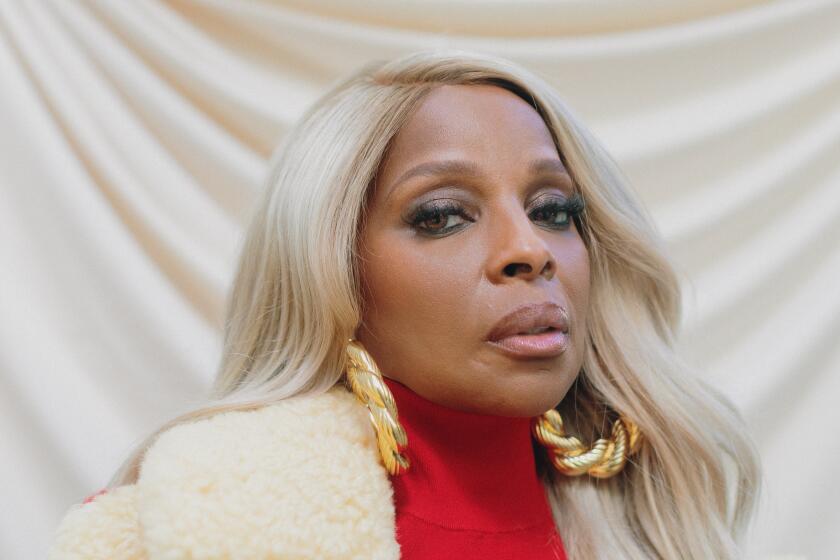What’s next for Pandora radio? Co-founder Tim Westergren discusses
Tim Westergren hasn’t always been a digital music prophet. When he founded Pandora Media Inc. in 2000, it was more of a curious academic experiment, called the Music Genome Project, to analyze the attributes of all types of music, from early Renaissance madrigals to trip hop and funk.
That was followed in 2005 by Pandora’s Internet radio service, which offers music deemed by the Music Genome Project as similar to favorite songs or bands of individual listeners.
Though wildly popular, the company limped along financially until 2008, when Westergren announced that Pandora was on the brink of collapse, thanks to a dramatic, retroactive increase in performance royalties that Internet radio stations were ordered to pay by federal courts.
The announcement came as a shock to Pandora’s 6 million listeners, who bombarded their elected officials with demands to reduce the fees. The campaign, called SaveNetRadio, worked. The fees were ratcheted down last year, sparing Pandora from what seemed like certain extinction.
The Oakland company still forks over 60% of its revenue in royalties, but now it can focus on growing, rather than just staying alive. Pandora today has more than 40 million listeners on mobile devices.
What’s next? Westergren, the company’s boyish and lanky chief strategy officer, who favors T-shirts that make him look much younger than his 44 years, answers that in a recent interview with The Times.
You’ve conquered cellphones. Now what?
Simply put, half of radio listening happens in the car. People spend 20 hours a week listening to music; 17 hours of that is from radio. About half of that radio listening, or 8.5 hours, occurs while they’re in a car. So that’s the Holy Grail.
We’re actively developing software products with car manufacturers and after-market stereo companies such as Pioneer and others. We’re already working with Ford, Mercedes and other companies that we can’t talk about now. Our goal is to be in every new car that rolls off the manufacturing line.
Half of the 20 million people who have Pandora on their iPhones use it in the car. But we can’t promote that kind of usage because of the safety concerns involved when you’re driving and trying to control your phone at the same time. So the future is in being able to control Pandora right from your steering wheel.
Some folks in the music business think all-you-can-eat subscription services such as EMusic and Rhapsody have no future. Others say it’s got to be ad-supported. What do you think?
We do have a subscription service. It’s $3 a month, and only a tiny number of people subscribe. It gives you a higher-quality stream, more song skips and doesn’t have any ads. For years, the No. 1 reason people gave us for subscribing was that they wanted to donate money to Pandora. Only recently did the No. 1 reason change to having no ads. Donating to Pandora is now No. 2.
We have three 15-second commercials every hour. They’re essentially every 20 minutes. That’s 45 seconds of advertising an hour. On broadcast radio, it’s more like 12 to 14 minutes of ads — 80% of them are local ads. When ad buyers think of Internet, they think it has to be national. But that’s not necessarily true. Every ad we do can be narrowed by age, gender, ZIP Code and musical taste.
What’s the future business model for digital music? And is Web radio hurting or helping artists and labels?
Web radio isn’t hurting the business. It’s helping. Think about it this way. For years, broadcast radio collected billions of dollars in advertising. Almost none of it went to the labels, and a small amount of it goes to composers.
Every hour that goes from broadcast radio to Internet radio means more money for artists. That’s because Internet radio, unlike broadcast, pays performance royalties. Last year, we made $50 million in revenue, and $30 million of that went to artist royalties. As listeners shift toward Web radio, there will be money for artists that didn’t exist before.
Secondly, Internet radio doesn’t cause people to buy less music. Music labels are afraid Internet music services will cannibalize music sales. That’s how they see on-demand services like Spotify. We’re promotional, not substitutional — 43% of the people who get Pandora end up buying more music than they did before they signed up. Only 1% say they buy less music.
You’ve been in bands, playing jazz and rock on the keyboard. With the Internet opening up doors for musicians to find an audience, how much easier is it to make a living from being a musician?
It’s just as hard as it used to be. When you ask this question, you’re asking how many bands can write good music, have staying power and can tour on a regular basis. My current theory is that the number is fewer than 5,000 bands. It’s a pretty small number, and that’s OK. It’s true of any highly skilled profession. And this is a really tough profession, because it’s not just raw talent that determines success.
More to Read
The biggest entertainment stories
Get our big stories about Hollywood, film, television, music, arts, culture and more right in your inbox as soon as they publish.
You may occasionally receive promotional content from the Los Angeles Times.









